This post may contains affiliate links. Read our full disclosure here.
The world of Organic vs. Biodynamic Wine can seem like a maze of certifications and farming philosophies. When I first became curious about sustainable wines, the difference between these two approaches wasn’t immediately clear. The simplest distinction? Organic wine focuses on eliminating synthetic chemicals from the growing process, while biodynamic wine embraces a complete holistic philosophy that views the vineyard as a living ecosystem influenced by cosmic rhythms.
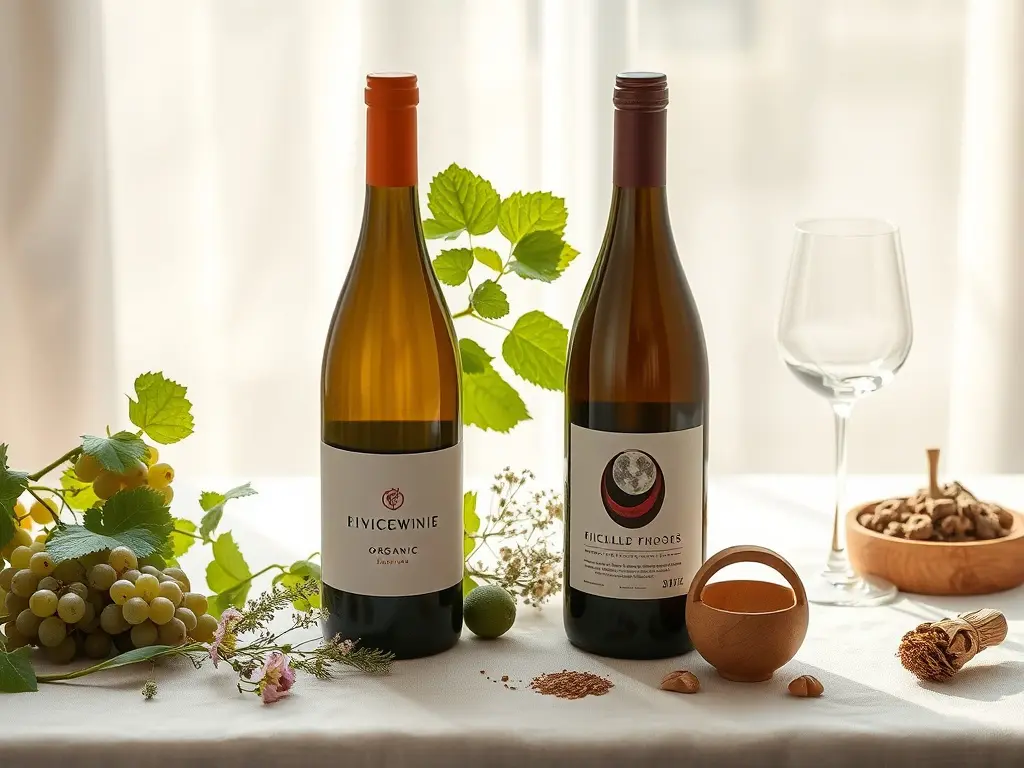
Understanding these differences isn’t just about being wine-savvy—it’s about making choices that align with your values and taste preferences. As someone who’s spent years exploring both styles, I’ve come to appreciate how each approach creates distinct flavor profiles and environmental impacts. This guide will help you navigate the Organic vs. Biodynamic Wine landscape so you can confidently choose bottles that match both your palate and principles.
What Is Organic Wine?
Organic wine represents a commitment to chemical-free grape cultivation and minimal intervention in the winemaking process. After attending a tasting at a local organic vineyard last year, I gained a deeper appreciation for the meticulous standards these winemakers follow.
“Organic vs. Biodynamic Wine comes down to whether a vineyard simply avoids chemicals or embraces a holistic philosophy of farming.”
Farming Principles

The foundation of organic wine begins in the vineyard with these core practices:
- No synthetic pesticides or herbicides: Instead of chemical solutions, organic farmers combat pests and weeds with natural predators, cover crops, and OMRI-approved natural treatments.
- Natural soil management: Composting, green manures, and natural fertilizers replace synthetic options to build healthy soil structure.
- Biodiversity promotion: Organic vineyards typically maintain diverse plantings and habitats that support beneficial insects and natural vineyard health.
- Certification standards: In the United States, wines labeled organic must meet USDA Organic standards outlined at https://www.usda.gov/topics/organic.
Winemaking Practices
Once grapes reach the winery, organic principles continue with these approaches:
- Limited chemical additives: Organic winemaking restricts the use of synthetic processing aids during fermentation and aging.
- Regulated sulfite usage: In the U.S., certified organic wines must contain no added sulfites (naturally occurring sulfites are permitted), though EU standards allow minimal additions.
- Natural yeasts: Many organic producers prefer wild/native yeasts for fermentation rather than commercial strains.
- Clean flavor profile: The result is often wines with bright, fruit-forward characteristics that clearly express the true terroir of the vineyard.
What Is Biodynamic Wine?

Biodynamic wine takes sustainable viticulture to another level by treating the vineyard as a complete self-sustaining organism. During a visit to a biodynamic estate in Sonoma, I watched farmers preparing special herb-infused composts according to a lunar calendar—a practice that seemed both ancient and revolutionary.
Farming Principles
Biodynamic farming incorporates these distinctive practices:
- Holistic farm organism: The entire vineyard operates as one living entity where plants, animals, and humans work in harmony.
- Cosmic rhythms: Planting, pruning, and harvesting follow a calendar based on lunar and planetary positions—not just seasonal changes.
- Special preparations: Nine specific biodynamic preparations (numbered 500-508) form the cornerstone of this approach, including horn manure (cow manure fermented in a cow horn) and silica solutions.
- Certification requirements: Demeter International oversees biodynamic certification globally, with strict standards detailed at https://www.demeter.net.
Winemaking Practices
In the cellar, biodynamic winemaking follows these guidelines:
- Minimal intervention philosophy: Biodynamic winemakers typically avoid manipulating wines with modern technology or additives.
- Closed-loop systems: Ideally, everything needed for vineyard health comes from within the property itself, creating a self-sustaining cycle.
- Natural fermentation: Native yeasts are strongly preferred over commercial strains.
- Expression of place: The finished wines often display deeper complexity and pronounced soil characteristics that reflect their unique growing location.
Organic vs. Biodynamic Wine: Side-by-Side Breakdown
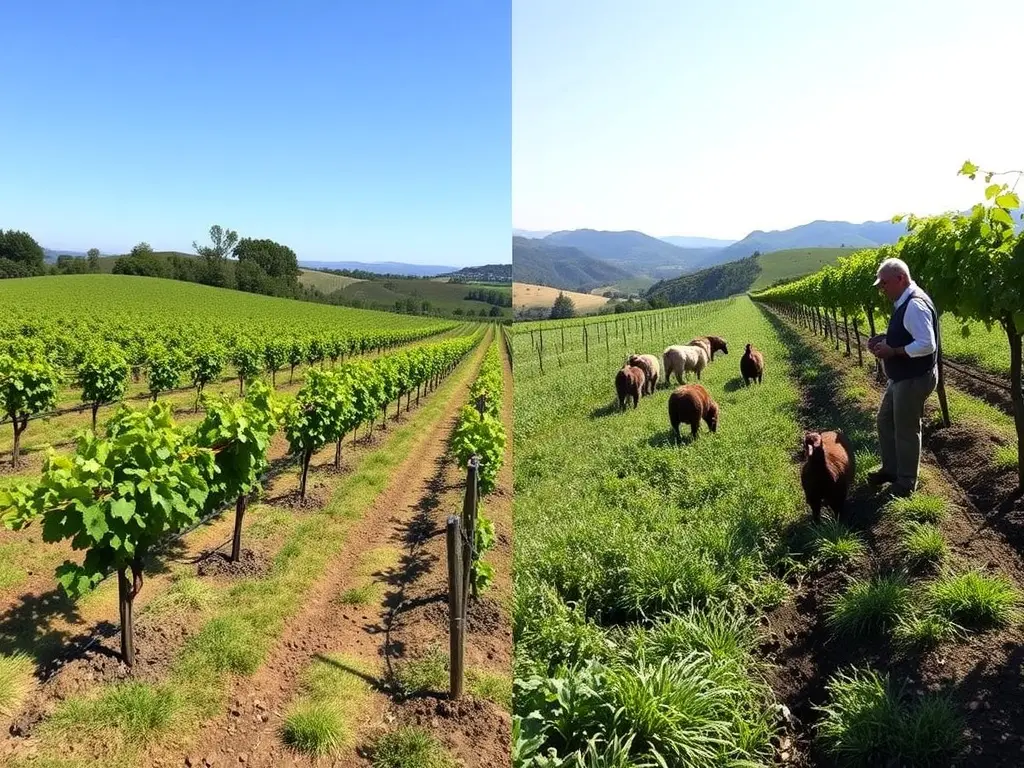
When comparing Organic vs. Biodynamic Wine, several key distinctions emerge across multiple categories. This breakdown helps clarify the practical differences between these two sustainable approaches:
| Category | Organic Wine | Biodynamic Wine |
|---|---|---|
| Farming Approach | Avoids chemical inputs and synthetic sprays | Follows holistic, spiritual, and lunar-influenced farming |
| Certification Systems | USDA Organic (USA), EU Organic | Demeter Certification |
| Fertilizers & Inputs | Natural-only like compost and green manure | Special biodynamic composts and herbs, e.g., horn manure |
| Winemaking Method | Minimally processed, limited sulfites | Minimalist, with zero chemical additives |
| Philosophy | Clean and sustainable | Regenerative and spiritual ecology |
| Taste | Fruit-forward, varietal clarity | Earthier, complex and expressive of place |
One crucial point: all biodynamic wines are inherently organic, but not all organic wines are biodynamic. Think of biodynamic as organic-plus, with additional philosophical and spiritual dimensions that go beyond simply avoiding chemicals.
Why Choose Organic Wine?

For many wine lovers, organic wine offers an accessible entry point into sustainable wine choices. My wine club recently focused on affordable organic options, and we discovered dozens of excellent bottles under $25 that delivered on both flavor and eco-credentials.
- Health considerations: With no synthetic pesticide residues, many consumers choose organic wines to reduce their chemical exposure.
- Environmental benefits: Organic vineyards promote biodiversity, healthier soils, and protect local water systems from agricultural runoff.
- Wider availability: You’ll find certified organic wines in most major retailers and supermarkets, making them easy to access.
- Budget-friendly options: Many excellent organic red wines under $30 provide great value compared to their conventional counterparts.
The organic wine market has exploded in recent years, with options ranging from everyday table wines to premium bottles. For beginners interested in exploring sustainable wines, the organic category offers a straightforward starting point without diving into the more esoteric aspects of biodynamic practices.
Why Choose Biodynamic Wine?
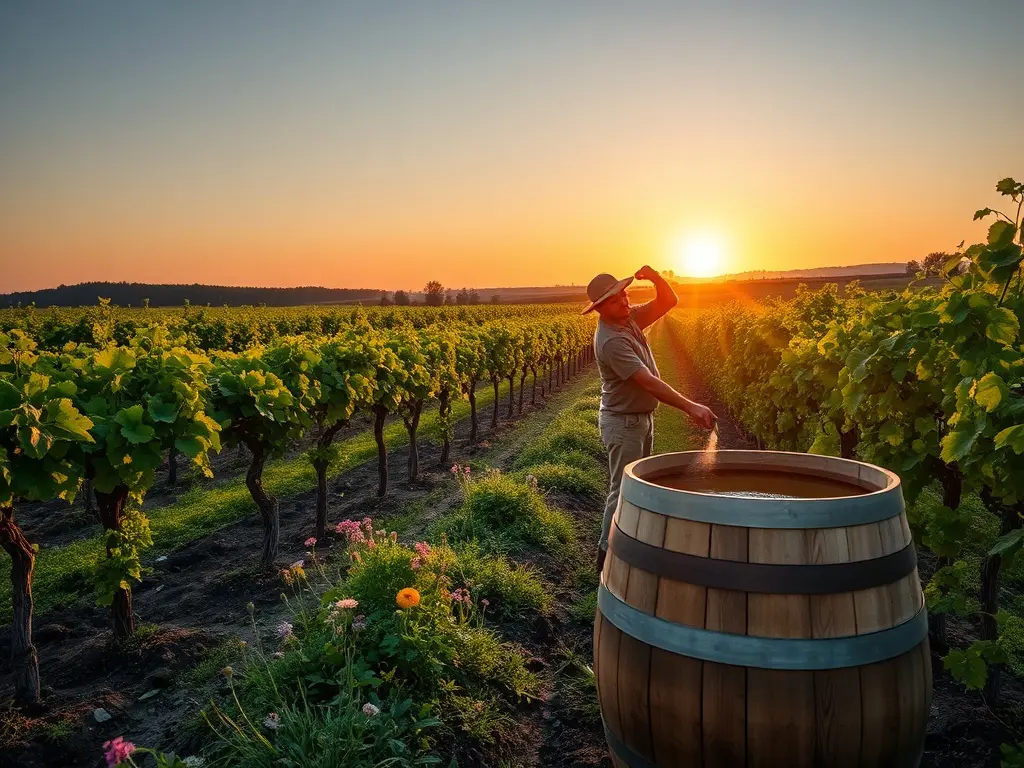
Biodynamic wines appeal to those seeking wines with a deeper philosophical connection to nature. During a blind tasting with friends, we consistently found the biodynamic options displayed more distinctive character—something my sommelier friend attributes to their holistic farming approach.
- Ecological commitment: Biodynamic farming regenerates soil health and creates self-sustaining agricultural systems that may be more resilient to climate change.
- Philosophical alignment: For those who value spiritual dimensions in agriculture, biodynamic wines represent a holistic approach that honors cosmic influences.
- Distinctive character: Many wine enthusiasts believe biodynamic wines better express their vineyard origins and showcase more complexity.
- Quality producers: Some of the world’s most celebrated wineries have adopted biodynamic methods, elevating the category’s prestige.
The biodynamic wine community often represents the cutting edge of the traditional winemaking movement, pushing back against industrial wine production methods. While these wines might require more hunting to find and typically command higher prices, many enthusiasts consider them worth the extra effort for their unique qualities.
Tasting Differences: Organic vs. Biodynamic Wine
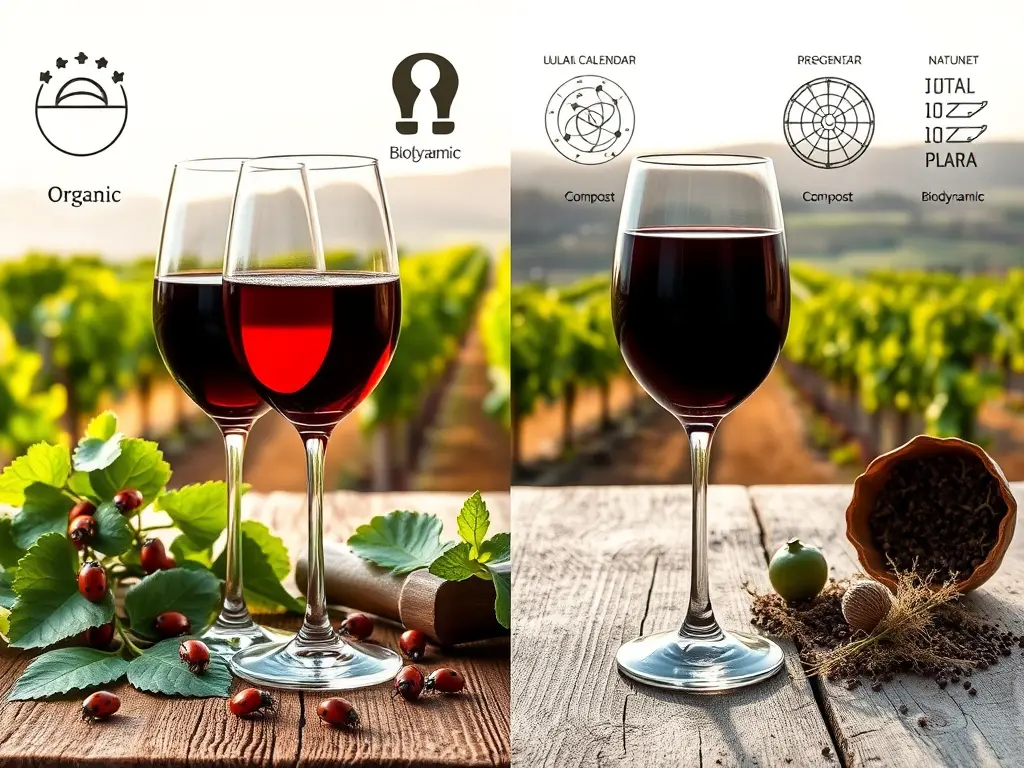
Can you actually taste the difference between Organic vs. Biodynamic Wine? While individual wines vary enormously, certain patterns emerge when comparing these two categories. A side-by-side tasting reveals subtle but noticeable distinctions.
Organic Wine Flavor Profiles
- Fruit clarity: Organic wines often display bright, precise fruit flavors with clean finishes.
- Varietal expression: The grape variety’s typical characteristics tend to shine through clearly.
- Freshness and vibrancy: Many organic wines show lively acidity and direct flavor profiles.
- Approachable style: Generally more accessible to mainstream wine drinkers without challenging flavor elements.
Biodynamic Wine Flavor Profiles
- Textural complexity: Biodynamic wines frequently offer more layered mouthfeel and structural depth.
- Mineral presence: Many tasters note pronounced mineral or earthy qualities in biodynamic bottles.
- Site-specific character: These wines often showcase more of their specific vineyard location characteristics.
- Aging potential: The structural elements in many biodynamic wines can contribute to better evolution over time.
A fun way to explore these differences is to host a comparative tasting with friends. Choose the same grape variety from the same region but with one organic and one biodynamic producer. The subtle variations can spark fascinating conversations about farming’s impact on wine flavor.
FAQs About Organic vs. Biodynamic Wine
When discussing Organic vs. Biodynamic Wine with friends, certain questions consistently arise. Here are straightforward answers to the most common inquiries:
Are all biodynamic wines organic?
Yes, biodynamic wines inherently meet or exceed organic standards. The biodynamic certification requires adherence to organic principles plus additional specific practices based on Rudolf Steiner’s agricultural philosophy.
Do biodynamic wines taste better than organic wines?
This depends entirely on personal preference. Some wine lovers prefer the purity and directness of organic wines, while others enjoy the complexity and character often found in biodynamic bottles. The best approach is to try both and discover your own preference.
Why are biodynamic wines typically more expensive?
Biodynamic farming requires more manual labor, specialized preparations, and often yields fewer grapes per acre. These factors, combined with the cost of certification and the typically smaller production scale, contribute to higher prices.
How can I identify organic or biodynamic wines while shopping?
Look for certification logos on the bottle. USDA Organic or EU Organic symbols indicate organic certification, while the Demeter logo signifies biodynamic certification. Some regions also have their own local certification systems that align with specific wine classification standards.
Sustainable Wine Labels to Know
Navigating wine store shelves can be confusing with various eco-labels. Here are the key certifications to recognize when shopping for sustainable wines:
- USDA Organic: The official U.S. government certification for organic agriculture, requiring strict adherence to organic standards in both farming and processing. Details at https://www.usda.gov/topics/organic.
- Demeter Biodynamic: The internationally recognized certification for biodynamic agriculture, founded in 1928 and now operating in over 50 countries. Learn more at https://www.demeter.net.
- EU Organic: The European Union’s organic certification, which allows small amounts of added sulfites (unlike USDA Organic wine standards).
- Regenerative Organic Certified: A newer certification focusing on soil health, animal welfare, and social fairness that goes beyond basic organic standards.
Remember that some excellent sustainable producers may practice organic or biodynamic methods without certification due to the costs involved. Getting to know small local wineries and their practices can sometimes reveal hidden gems that follow these principles without the official labels.
Making Your Choice: Which Sustainable Wine Path Is Right for You?
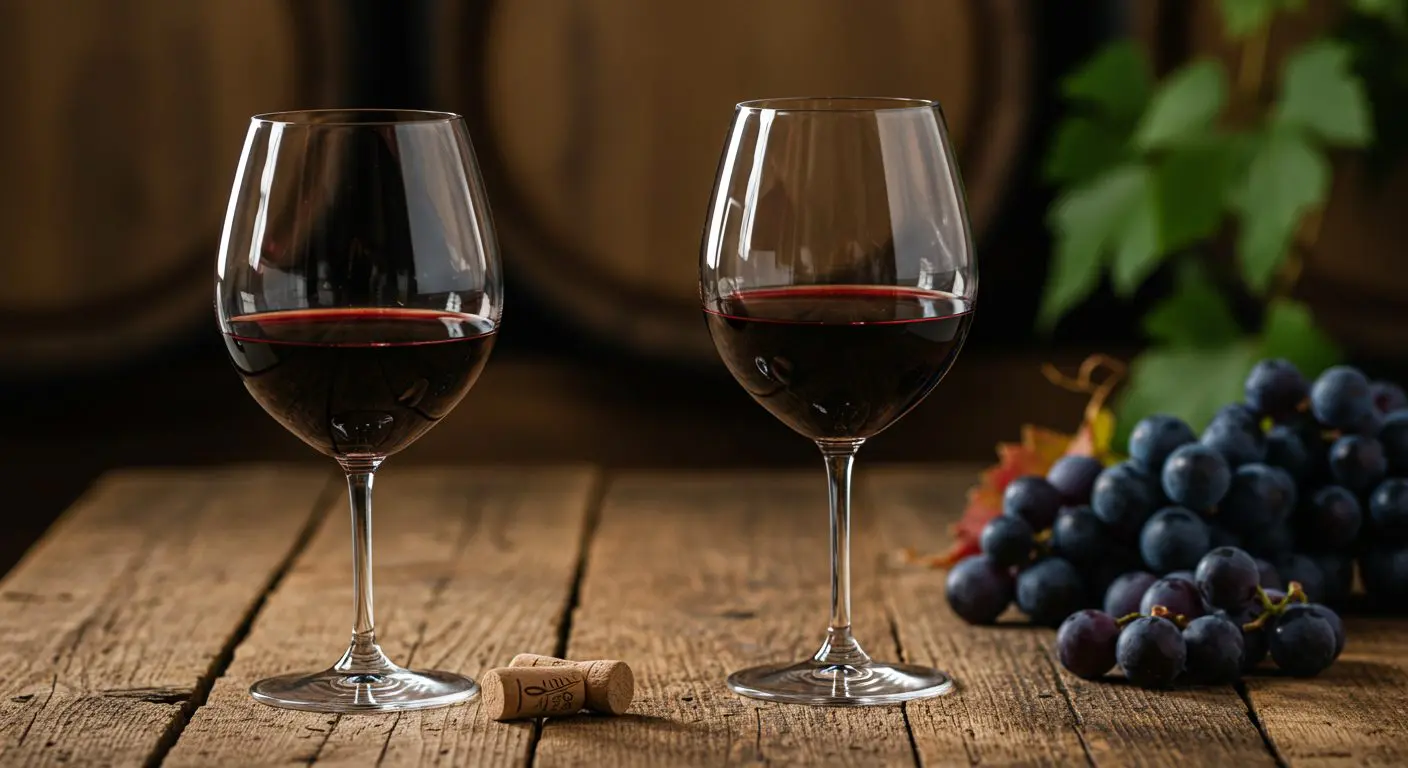
After exploring the nuances of Organic vs. Biodynamic Wine, the choice ultimately comes down to your personal values, budget, and taste preferences. For those new to sustainable wines, organic bottles offer an accessible starting point with wide availability and approachable flavors.
If you’re drawn to wines with distinctive character and appreciate the holistic philosophy behind biodynamic farming, exploring these more specialized bottles might bring a new dimension to your wine enjoyment. Many wine enthusiasts start with organic options and gradually venture into biodynamic territory as their palates and interests evolve.
Both approaches represent significant improvements over conventional viticulture in terms of environmental impact. By choosing either organic or biodynamic wines, you’re supporting practices that promote healthier soils, greater biodiversity, and more sustainable farming communities.
The beauty of today’s wine world is the incredible variety available at every price point. Whether you’re looking for an everyday table wine or a special occasion bottle, sustainable options exist that can satisfy both your palate and your principles. Happy exploring!




